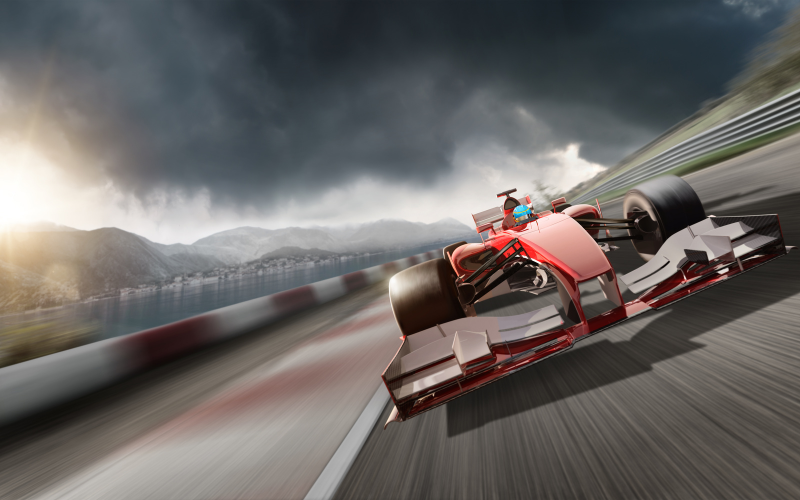
Auto racing has existed since the first automobile was invented, with various types organized. The first recorded race took place in 1867. The earliest of these events were reliability trials, where the purpose was to prove these new machines were a practical mode of transportation. These events would soon evolve into an important way for automobile makers to demonstrate the power and performance of their machines. By the 1930s, cars devoted specifically to racing had been developed and there are now a number of different categories in existence. The following list is of 12 Types of Auto Racing that Exist Today.
As cars evolved, so would the types of racing that existed. Overtime, different types of vehicles were being manufactured to accommodate varying consumer needs, terrains, economics, and so forth. With these enhancements occurring, so were the potential of race cars and the types of events that could exist. If you enjoy auto racing, read on to see every single type of major auto racing that exists. You may be surprised at how many exist today and their differences.
The List of the 12 Types of Auto Racing that Exist Today & Details
1. Open Wheel Racing
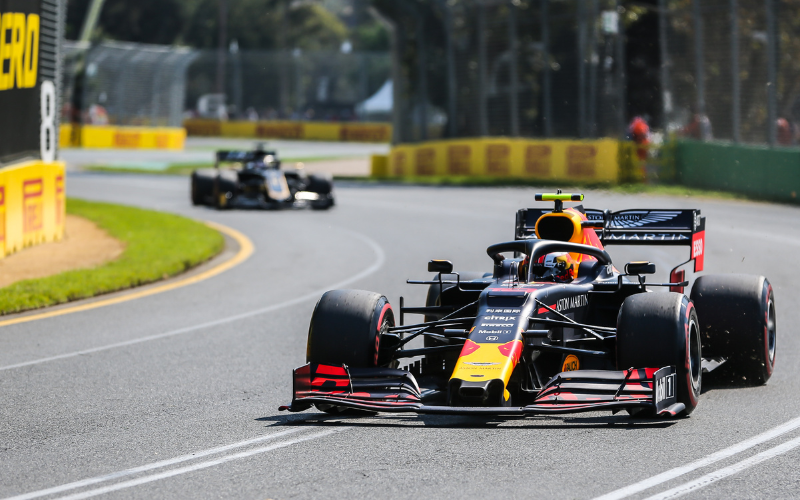
Vehicles Used: Indy Car & Formula One Car
Track Types: Street Circuits & Racetracks
Major Races: The Monaco Grand Prix & The Indianapolis 500
Notable Racers: Rick Mears & Lewis Hamilton
In open wheel racing, as the name would imply, the wheels of the cars are not covered. The cars almost always have aerofoil wings on the front and back to enhance track adhesion through downforce. The two most popular types of open-wheel racing are Formula One and IndyCar. Formula one is an international series that races very high tech cars exclusively on street circuits and race tracks. Some of the most important races are the Italian Grand Prix, the British Grand Prix, and the Monaco Grand Prix.
While aesthetically similar to Formula One, IndyCar Series cars are not quite as sophisticated technologically. They are however, faster, due to the oval shape of the tracks allowing for higher speeds, with average lap times coming in at 241 mph. The biggest race in IndyCar is the Indianapolis 500, which is the longest running race ever, with the largest single-day sporting event crowd of over 350,000 in attendance.
The other major international open wheel racing series is Formula 2, with regional series including Super Formula, Formula V6 Asia, Formula Renault 3.5, Formula Three, Formula Palmer Audi, and Formula Atlantic. There also exist many amateur racing clubs, with each series catering to a section of the market from lower cost focused, to emulating international racing standards.
2. Touring Car Racing
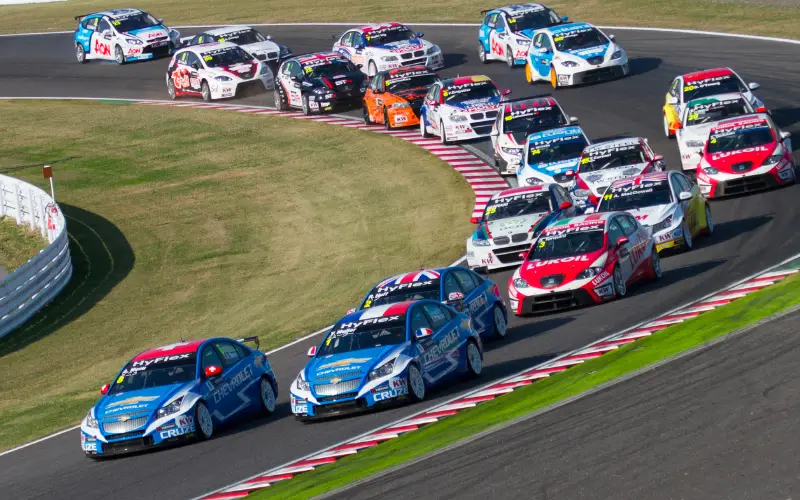
Vehicles Used: Heavily Modified Production-Based Cars
Track Types: Street Circuits & Road Courses
Major Races: 24 Hours of Nurburgring
Notable Racers: Yvan Muller
Touring car racing is a type of auto racing that is run with heavily modified production-derived race cars. While these cars are not as fast as open wheel race cars, the full-contact racing, higher rate of passing, small speed differentials, large grids, and fans owning the same production versions of the cars being raced, make this type of racing quite popular in the United States. Touring car races are comprised of sprints as well as endurance races.
The dominant North American touring series is currently The Sports Car Club of America’s SPEED World Challenge Touring Car and GT championships. Another notable series is the Trans-Am Series. While the historical race it is currently going through some significant transitions, it is still the longest-running road racing series in the U.S. where Amateurs can compete with home-built factory-derived vehicles at the National Auto Sport Association venue.
Touring car racing is not just limited to the United states. There are major international touring car championships which include the Supercars Championship, British Touring Car Championship, Deutsche Tourenwagen Masters, and the World Touring Car Championship. There is also a one day event open to Super 2000 specification touring cars from Europe’s many national championships, known as the European Touring Car Cup.
3. Sports Car Racing
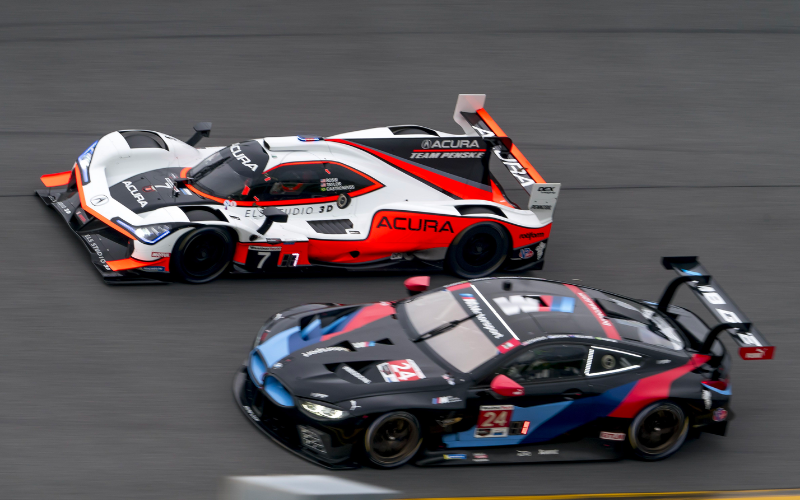
Vehicles Used: Sports Prototypes & Grand Tourers
Track Types: Closed Public Roads & Dedicated Sections of a Racing Track
Major Races: The FIA World Endurance Championship & The 24 hours of Le Mans
Notable Racers: Yvan Muller
Sports car racing is a type of auto racing that uses purpose-built prototypes or grand tourer sports cars. Unlike GT cars, sports prototypes are not based on road-legal cars. They are closed wheel, often closed cockpit race cars built using much lower weight and much more down force, designed specifically for endurance racing. As opposed to outright speed, these races place more of a focus on reliability and efficiency over long distances, of at least 600 miles. Cars are driven by teams of two or more drivers that switch every few hours.
The FIA World Endurance Championship is the premier championship series of prototype sports car racing, superseding the Le Mans Cup. Prior to the FIA World Endurance Championship, the premier races were the 24 hours of Le Mans, the European Le Mans series, the Asian Le Mans Series and the WeatherTech SportsCar Championship. These cars are referred to as Le Mans prototypes. In addition to Le Mans prototypes, all three Le Mans Series run GT cars but with different restrictions than the FIA GT cars. Due to the performance difference between grand tourers and sports prototypes, races will typically involve several racing classes, with each looking to win their own championship.
The Blancpain GT Series is the main series for GT car racing, with notable GT championships including the Blancpain GT World Challenge America, Blancpain GT World Challenge Asia, Super GT, and the International GT Open. There are also minor regional and national GT series featuring both amateur and professional drivers.
4. Production Car Racing
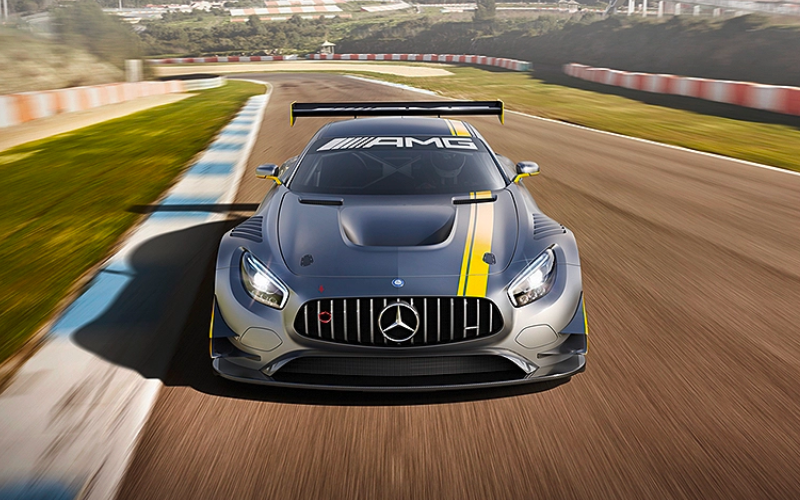
Vehicles Used: Slightly Modified or Completely Unmodified Production Cars
Track Types: Permanent Road Courses & Street Courses
Major Races: Bathurst 6 Hour
Notable Racers: Spence Morgan & Ralph Sanders
Production car racing is a category of auto racing where slightly modified or completely unmodified production cars race each other in classes and outright. The cars will usually have the inclusion of a roll cage and race tires with other limited freedoms allowed, for performance and longevity. Production car racing is essentially an economical version of touring car racing. This style of racing standard production vehicles is known as Group N, under the FIA.
There are a number of production racing categories and series based on particular makes of cars, such as the Audi and Porsche racing series. Some series use handicaps for their smaller vehicles so that as the larger vehicles catch them, all the cars can finish the race at the same time. There are several different series that have run all over the world.
Major production car races include the Bathurst 6 Hour, Bahrain 24 Hour, Dubai 24 Hour and Malaysian 12 Hour. These races are sanctioned by the FIA and SCCA. In some of these racing classes, it requires that the cars raced be production vehicles only slightly adapted for racing. Manufacturers will produce a limited run of these lightly modified production vehicles, known as “homologation specials”, to be put up for sale to the public so that they can be raced legitimately.
Read More Fun Facts
Learn more fun facts with Trivia Mastermind content.
5. One Make Racing
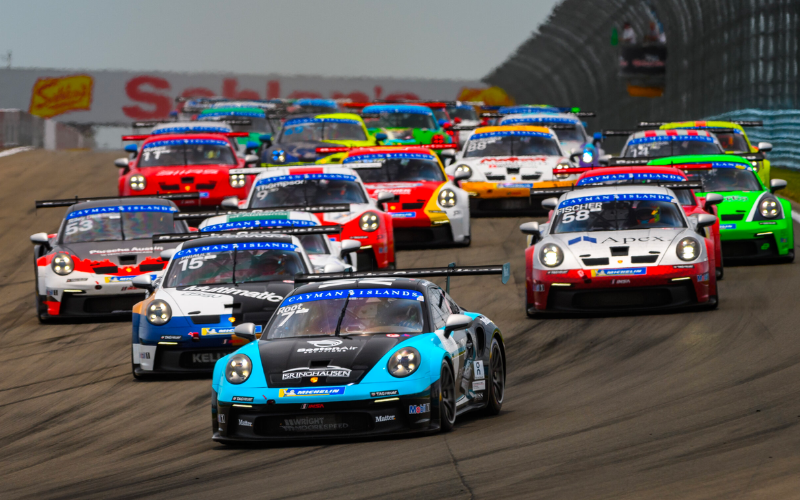
Vehicles Used: Production-based Cars from a Single Manufacturer or a Single Model
Track Types: Temporary Street Circuits & Racetracks
Major Races: The Porsche Supercup
Notable Racers: Patrick Huisman
One-make racing is a style of racing that often employs production-based cars from a single manufacturer or even a single model. In one-make racing, all racers compete using identical or almost identical vehicles from the same manufacturer. Typically, these vehicles will use the same type of chassis, powertrain, tires, brakes, and fuel. Even though a series like Formula One uses vehicles that look very similar, these races are not considered one-make racing since they allow manufacturers to design their own chassis and powertrain.
There are numerous notable one-make races around the world, such as the Porsche Supercup, Lamborghini Super Trofeo, and the Toyota Racing Series to name a few. Some of these formulae have even fostered many distinct national championships.
One-make racing series are often done at the club level. The production-based cars, restricted modifications, and close vehicle equivalence in performance are very well suited for clubs. Some of the most well known, one make racing series include the Mini 7 Championship, the Radical European Masters, John Cooper Mini Challenge, Clio Cup, Ginettas, Caterhams, BMWs, and MX5s. There are also single-chassis single seater formulae.
6. Time Attack
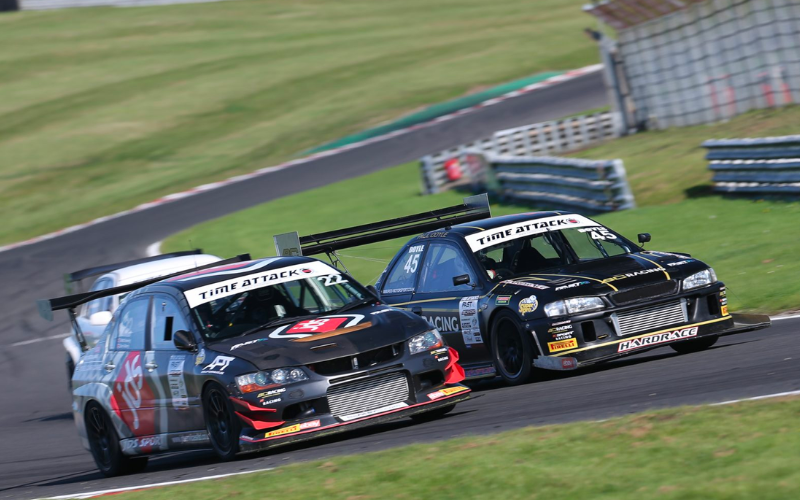
Vehicles Used: Modified Road-going Cars
Track Types: Racetracks
Major Races: The Super Lap Battle & The World Time Attack Challenge
Notable Racers: Eiji “Tarzan” Yamada
Time Attack races began in Japan in the mid 60s and have since spread throughout the world. Time Attack racing is a type of motorsport where the racer’s vehicles are timed through numerous circuits of a track for the best lap times. The competitors will run a preliminary circuit, followed by the timed laps, and then close out with a cool-down lap.
Time Attack races are different from time trial events. Time Attack races have a limited number of laps while time trials have open sessions. In these races, cars are required to start off under full rolling start conditions following a warm up lap in which they will have to accelerate out as fast as possible to determine how fast they enter their timed lap. Time Attack races typically use modified road-going cars that are required to have tires authorized for road use.
The Super Lap Battle is a popular Time Attack event in the United States. It is been held at Buttonwillow Raceway Park since 2004. The World Time Attack Challenge has been held at Sydney Motorsport Park in Australia since 2010. It is an international event known to attract the fastest time attack teams from around the world. In Europe, there are number of popular Time Attack events including the Dutch Time Attack, Circuit Zandvoort, TT-circuit Assen, and Nürburgring GP-Strecke.
7. Stock Car Racing
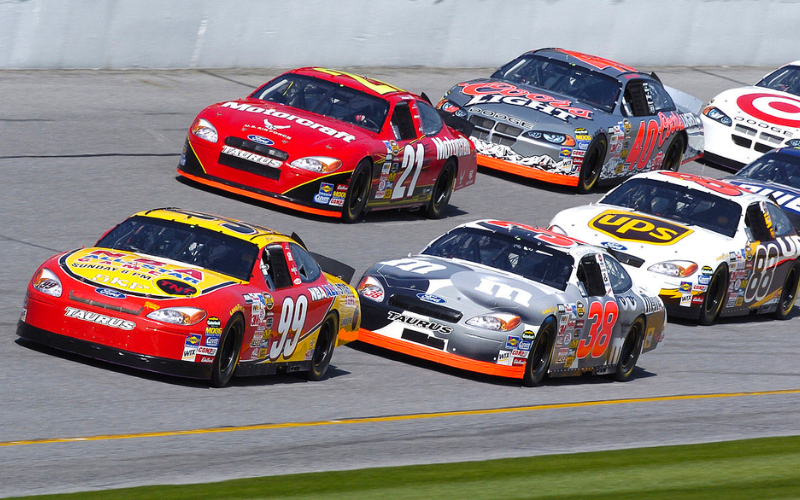
Vehicles Used: Stock Cars
Track Types: Racetracks
Major Races: The Daytona 500
Notable Racers: Jimmie Johnson
Stock car racing is the most popular form of auto racing in North America. The races are primarily run on oval shaped tracks, using vehicles that resemble production cars, but are racing purposed machines known as stock cars. They are built using tight specifications, with top level cars exceeding 200 mph.
Stock car racing began in the 1920s during the prohibition era. Moonshine runners would often have to outrun the authorities and to accomplish this, they would upgrade their vehicles without modifying the exteriors so they would blend in with ordinary cars. Over time, runners would begin challenging one another to races, which would eventually progress to organized events, and in turn, the creation of a unified set of rules. As a result, NASCAR would be formed by Bill France Sr. to regulate these stock car events. Originally, these races used production-model cars, hence the name “stock car”, but over time, the vehicles would evolve into dedicated racing machines.
The National Association for Stock Car Auto Racing or NASCAR, is now the largest stock car racing governing body and offers the premier series to racers through the NASCAR Cup Series. The most famous races of this series are the Southern 500, the Coca-Cola 600, the Brickyard 400, and the Daytona 500. NASCAR also runs a number of feeder series across the United States, such as the Xfinity Series and Gander RV & Outdoors Truck Series. NASCAR PEAK Mexico Series runs races across Mexico and NASCAR Pinty’s Series runs races across Canada. In the UK, the most famous championships are the BriSCA F1 Stock Cars.
8. Rallying
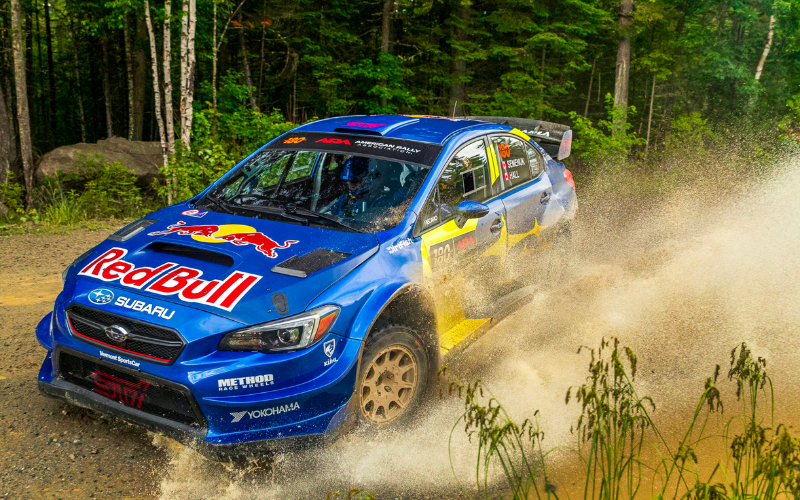
Vehicles Used: Production-based Rally Cars
Track Types: Private Roads, Public Roads, or Off-road
Major Races: The World Rally Championship
Notable Racers: Sébastien Loeb
Rallying is a type of race that takes place on off-road areas and closed public roads. This style of racing uses a point-to-point format. Participants and their co-drivers “rally” to a set of points, leaving in regular intervals from start points. A rally usually takes place over a number of “special stages” on any kind of terrain. Entrants are typically allowed to scout the racing areas and compile notes as they go. These pace notes will be used during the rally, with the co-driver reading them aloud to the driver to complete each stage as quickly as possible. The competition is based on lowest total elapsed time over the course of an event’s special stages. Group N production cars and more modified Group A cars, are the two classes of road legal production cars used at the international and most national championship levels of Rallying.
The top series of rallying is the World Rally Championship. There are also a number of regional championships. Many countries have their own national championships, with the most famous including the Monte Carlo Rally, Rally Finland, Rally Argentina, and Rally GB. There are also many smaller amateur club level categories of rallying around the world.
Other major rallying events held around the world include the African Rally Championship, Intercontinental Rally Challenge, British Rally Championship, and Asia-Pacific Rally Championship.
Play Trivia!
Challenge yourself and play trivia questions with answers and explanations.
9. Drag Racing
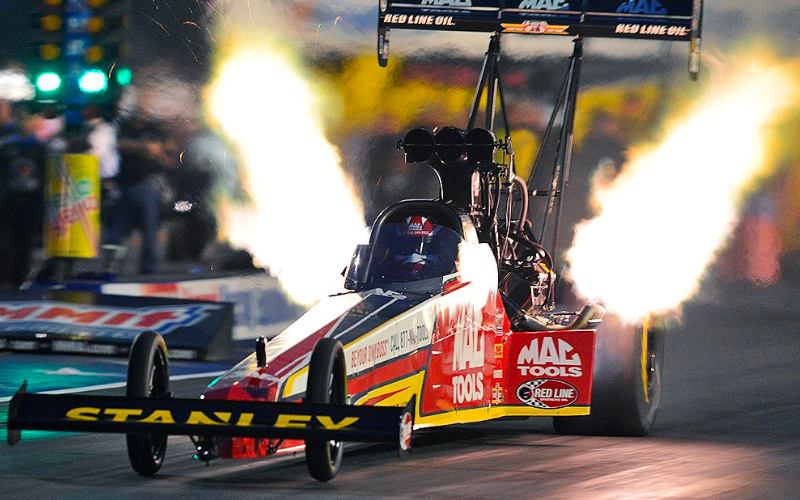
Vehicles Used: Dragsters, Roadsters, Sports Cars, Trucks
Track Types: Dragstrip
Major Races: The Chevrolet Performance U.S. Nationals
Notable Racers: John Force
Drag racing is a type of racing where the objective is to race a 1/4 or 1/8 mile straight-line distance, from a standing start, head-to-head, with the winner proceeding to the next round of competition. The vehicles used in drag racing range from everyday cars to the purpose-built dragsters.
Drag racing began in the 1940s with World War II veterans prominently involved. Because of this, some early drag races were done at decommissioned aircraft bases. Some of these bases had unused landing strips which were perfect for the sport. Wally Parks would form the National Hot Rod Association in 1951 to make drag racing an organized sport and to discourage street racing.
The premier drag racing organizations of North America are the National Hot Rod Association, followed by the International Hot Rod Association. These two groups oversee the majority of all events, with almost every drag strip being associated to one of the two sanctioning bodies. There are also niche drag racing organizations, such as the Nostalgia Drag Racing League and the National Electric Drag Racing Association. Internationally, there are a number of prominent drag racing organizations as well.
10. Off Road Racing
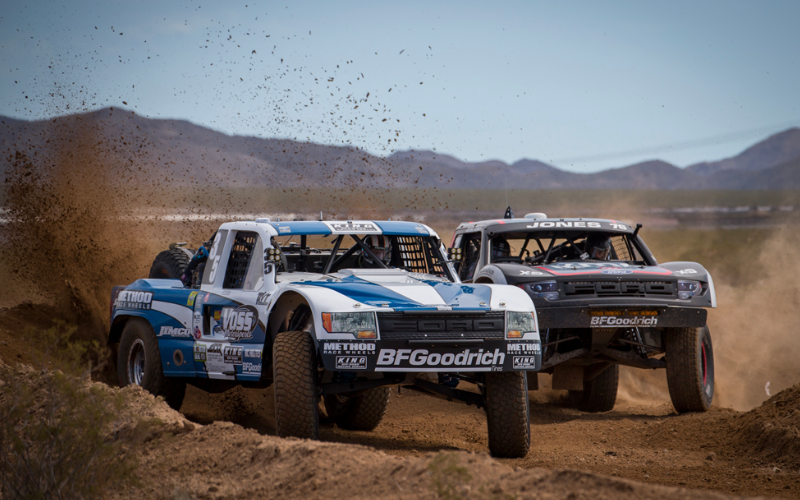
Vehicles Used: Trophy Trucks
Track Types: Desert Off Road Courses & Short Course Tracks
Major Races: The Baja 1000
Notable Racers: Ivan Stewart
Off-road racing is a form of racing where specially-modified vehicles race in off-road environments such as snow, dirt, or mud. In North America, the most popular events usually take place in the desert. In the 80s and 90s, another format of off-road racing was very popular in stadiums, known as short course tracks. In Europe the term “offroad” is reserved for autocross and rallycross. Their version of desert off-road racing (synonymous with off-road racing in the US) are called cross country rallies.
The most famous off-road race in North America is the Baja 1000, sanctioned by SCORE International. It is an annual Mexican off-road race, held on the Baja California Peninsula, that attracts competitors from all over the world. The race is the final round of a four-race annual series including the Baja 500, Baja 400 and the San Felipe 250. The series allows various vehicle types to compete on the same course, which has remained relatively unchanged since its inception.
The stadium racing made popular by the Mickey Thompson Entertainment Group called stadium racing, used temporary off-road racetracks constructed inside of stadiums for off-road racing. The U.S. Off Road Championship Series was another major race series of the late 90s that was broadcast on TV. The Stadium Super Trucks primarily began racing in stadiums and off-road courses in 2013, but has since put more emphasis on asphalt tracks. The two major organizations promoting short course off road racing in the United States were the Off Road Championship and the Lucas Oil Off Road Racing Series until their recent closures.
11. Kart Racing
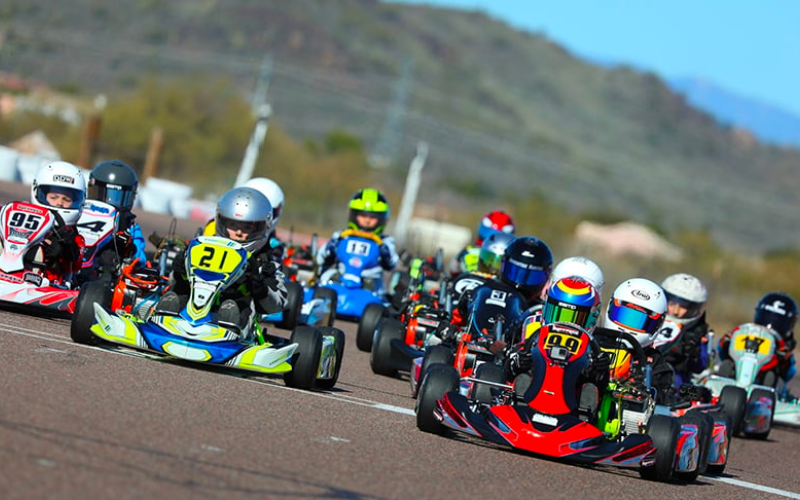
Vehicles Used: Go-karts
Track Types: Racetracks
Major Races: The Karting World Championship
Notable Racers: Ayrton Senna
Kart racing is a type of road racing that uses open-wheel, four-wheeled vehicles known as go-karts. Races usually take place on scaled-down circuits, with some professional kart races held on full-size circuits. Karts vary widely in speed, from recreational karts for general use being limited to lower speeds, to superkarts reaching speeds over 100 mph. Kart racing has been historically treated as the stepping stone to the higher levels of motorsports, with many Formula One drivers having begun their careers in karting.
Art Ingels built the first kart in Southern California in 1956; he is generally accepted as the father of karting. Art was a veteran hot rodder and a race car builder at Kurtis Kraft. Early karting events would be held in the Rose Bowl Stadium car park, becoming popular almost instantly and spreading internationally shortly after. The first kart manufacturer was Go Kart Manufacturing Co. in 1957, with McCulloch being the first company to produce engines for karts in 1959, and dedicated manufacturers building engines for karts beginning in the 60s.
Kart racing is viewed as the most economic form of motorsport racing on four wheels. It can be performed by almost anybody as a leisure activity. It is also one of the motorsports regulated by FIA under the name, the CIK. The FIA sanctions international championships under CIK. The top-level classes of karting are OK, OKJ, KZ1, KZ2, and Superkart; they race in national championships around the world as-well-as the World Championship.
12. Historic Sports Car Racing
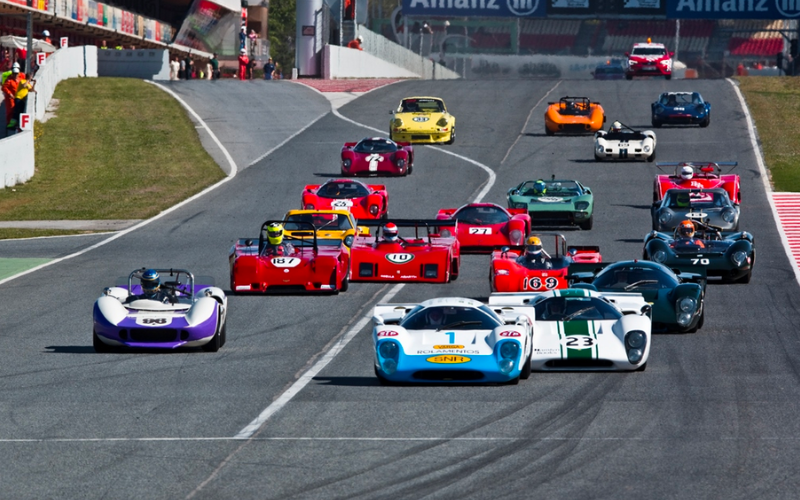
Vehicles Used: Cars from Specific Eras Only
Track Types: Racetracks & Street Circuits
Major Races: The Monterey Historic
Notable Racers: Amateur Drivers
Historic sports car racing is a motorsport that uses vehicles limited to a particular era, with the only modern aspect being safety precautions taken for these hobbyist races. Historic sports car racing events use a variety of motorsport types and are not limited to any specific kind of race. These events function as the antithesis to modern racing, focusing more on the hobbyist and purest aspects of racing.
Historic sports car racing tends to reduce corporate sponsorships and sport politics. This type of racing tends to be contested by wealthy car owners making these races more amateur and less competitive in approach. While there are several professional teams and drivers in historic sports car racing, these events tend to lean more towards private events.
Some of the most notable series are the Classic Endurance Racing, Historic Formula One Championship, Orwell SuperSports Cup, and the Historic Ferrari Challenge (formerly Historic Ferrari Maserati Challenge).
Read More Fun Facts
Learn more fun facts with Trivia Mastermind content.
Play Trivia!
Challenge yourself and play trivia questions with answers and explanations.
Recent Posts
Science Trivia - Astronomy ...
Step into a realm of nostalgia as we embark on a journey through the annals of pop culture and bid farewell to 35 recently obsolete technologies. In the ever-evolving landscape of innovation, certain...


